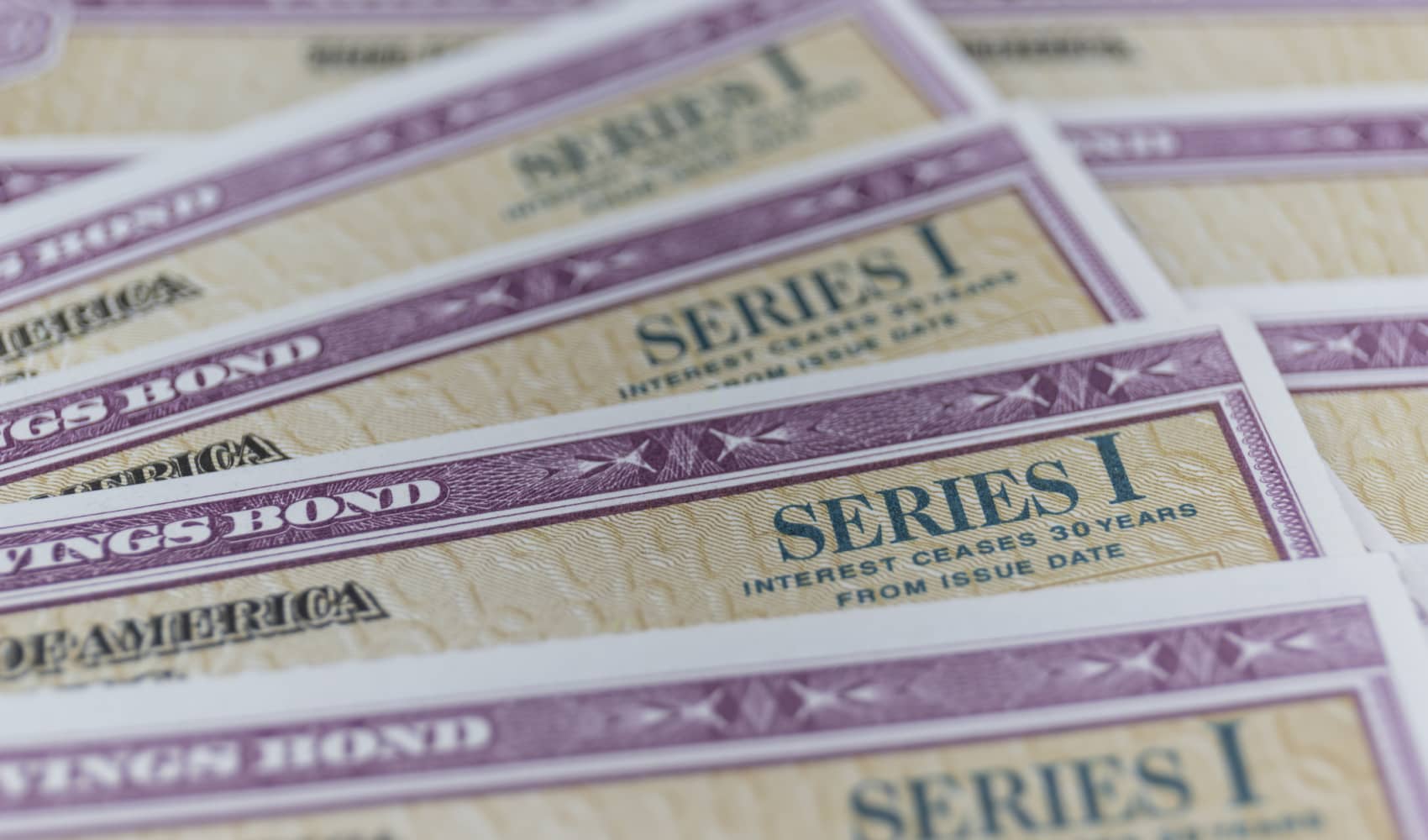Series I Bonds: Lock in 3.98% - Safe, Inflation-Proof Savings!
Unlock Secure Savings: New Series I Bond Rate Announced!
What's the Buzz About Series I Bonds?
Hey there, savvy savers! Are you tired of your money sitting in a savings account earning next to nothing? Looking for a secure, government-backed investment that keeps pace with inflation? Well, the U.S. Department of the Treasury has just announced the new Series I bond rate, and it's time to pay attention. Series I bonds are a type of savings bond that protects your purchasing power, and the latest rate is definitely worth considering. Think of them as a shield against the ever-rising costs of, well, everything!
The Headline: 3.98% for the Next Six Months
Here's the bottom line: The Treasury Department has announced that Series I bonds will pay an annual interest rate of 3.98% for the period from May 1 through October 31. That's the rate for newly purchased bonds. This means that if you buy an I bond now, you'll earn 3.98% annually for the first six months. Not bad, right?
Understanding the I Bond Rate Components
So, where does that 3.98% figure come from? The I bond rate isn't just pulled out of thin air. It's actually made up of two parts:
The Fixed Rate
This part stays the same for the life of the bond. The fixed rate for the current period is 1.10%. Think of this as the guaranteed minimum you'll earn on top of inflation. It's like the solid foundation of your investment.
The Inflation Rate (Variable Rate)
This rate changes every six months based on inflation. For this period, the inflation rate is 2.86%. This is the part that helps your savings keep up with rising prices. It's the dynamic component that makes I bonds so attractive during inflationary times.
How the New Rate Compares to Previous Rates
Let's put this rate in perspective. Remember, I bond rates fluctuate with inflation.
- Current Rate (May 1 - October 31): 3.98%
- Previous Rate (November 1, 2024 - April 30): 3.11%
- Rate Before That (Until October 2024): 4.28%
You can see that the rate is higher than the previous rate of 3.11%, but lower than the rate of 4.28% paid out during the high inflation months of 2024. It shows that inflation pressures, while still present, have cooled down somewhat.
Who Benefits from the New I Bond Rate?
So, who should be excited about this new rate? Well, anyone looking for a safe and inflation-protected investment should consider I bonds. But here are a few groups that might find them particularly appealing:
Risk-Averse Investors
If you're the type of person who prefers to avoid the ups and downs of the stock market, I bonds could be a good fit. They're backed by the U.S. government, so they're about as safe as investments get.
Retirees and Those Saving for Retirement
I bonds can be a valuable part of a diversified retirement portfolio. They provide a stable source of income that keeps pace with inflation, helping to protect your purchasing power in retirement.
Those Saving for Specific Goals
Whether you're saving for a down payment on a house, a child's education, or any other long-term goal, I bonds can be a smart way to grow your savings safely.
How Current I Bond Owners are Affected
If you already own I bonds, the new rate won't apply to your existing bonds immediately. Your I bond's interest rate adjusts every six months based on the purchase date. So, if you bought your bonds in, say, July, your rate will adjust in January. The TreasuryDirect website makes it very easy to track your I bonds and see when the rates adjust.
Why I Bonds Are a Smart Choice in an Uncertain Economy
Let's face it, the economy can feel like a rollercoaster these days. Inflation is still a concern, and the stock market can be unpredictable. That's where I bonds come in. They offer a safe haven for your savings, protecting you from the worst effects of inflation while providing a decent return. They're like a financial security blanket in uncertain times.
How to Buy Series I Bonds
Ready to jump in and buy some I bonds? Here's how:
Through TreasuryDirect
The easiest way to buy I bonds is directly from the U.S. Treasury through the TreasuryDirect website (treasurydirect.gov). You'll need to create an account, but the process is straightforward. Buying directly from TreasuryDirect ensures you get the best possible rate and avoids any fees.
With Your Tax Refund
You can also use your tax refund to purchase paper I bonds. This is a convenient option if you're already getting a refund and want to put it to good use. However, this option is only available for limited amounts, and they have to be paper bonds.
Limitations and Considerations
Before you go all-in on I bonds, there are a few things to keep in mind:
Annual Purchase Limit
You can only buy up to $10,000 in electronic I bonds per calendar year through TreasuryDirect. This limit is per individual.
Holding Period
You must hold I bonds for at least one year. If you redeem them before five years, you'll forfeit the last three months of interest. Think of it as a small penalty for early withdrawal.
Taxes
I bond interest is subject to federal income tax, but it's exempt from state and local taxes. You can also defer paying the tax until you redeem the bonds or they mature. Also, I Bonds are tax-free if used for qualifying educational expenses.
I Bonds vs. Other Savings Options
How do I bonds stack up against other savings options, like high-yield savings accounts or certificates of deposit (CDs)?
High-Yield Savings Accounts
High-yield savings accounts offer more liquidity than I bonds, meaning you can access your money whenever you need it. However, their rates can fluctuate more frequently and may not always keep pace with inflation. I bonds offer better inflation protection, but with less liquidity.
Certificates of Deposit (CDs)
CDs offer a fixed interest rate for a specific period. While they can provide a guaranteed return, they may not offer the same inflation protection as I bonds. Plus, like I bonds, you'll typically face a penalty for early withdrawal.
Strategies for Maximizing Your I Bond Investment
Want to get the most out of your I bond investment? Here are a few tips:
Stagger Your Purchases
Instead of buying all your I bonds at once, consider staggering your purchases over time. This can help you take advantage of potential rate changes.
Reinvest Your Interest
When your I bond interest is paid out, consider using it to purchase more I bonds. This will help you grow your savings faster over time.
Consider Gifting I Bonds
You can gift I bonds to others, up to the annual purchase limit. This can be a great way to help loved ones save for their future.
Future of I Bond Rates
What will the future hold for I bond rates? It's impossible to say for sure, as they're tied to inflation. However, if inflation continues to cool down, we could see rates decline further. On the other hand, if inflation picks up again, rates could rise. The key is to stay informed and adjust your savings strategy accordingly.
Conclusion: Are I Bonds Right for You?
So, are Series I bonds a good investment? Well, that depends on your individual circumstances and financial goals. If you're looking for a safe, government-backed investment that protects your purchasing power, I bonds are definitely worth considering. With the new rate of 3.98%, they offer a decent return in an uncertain economy. Just be sure to weigh the pros and cons and consider how they fit into your overall financial plan.
Frequently Asked Questions About Series I Bonds
- What happens to my I bond if inflation goes negative?
Even if the inflation rate is negative, your I bond will never lose value. The composite rate (fixed + inflation) can't go below 0%. You'll earn at least the fixed rate, even if inflation is in deflation territory. - Can I use I bonds for my child's education expenses and avoid paying taxes on the interest?
Yes, in certain situations, you can redeem I bonds to pay for qualified higher education expenses, and the interest earned may be tax-free. However, there are income limitations and other requirements, so be sure to consult IRS Publication 970 for details. - What's the difference between Series I bonds and Series EE bonds?
Series EE bonds earn a fixed rate of interest, while Series I bonds earn a rate based on both a fixed rate and an inflation rate. EE bonds double in value after 20 years (guaranteed). - Is there a penalty for redeeming I bonds early?
Yes, if you redeem I bonds before five years, you'll forfeit the last three months of interest. After five years, there's no penalty for redeeming them. - Do I have to hold I bonds until maturity?
No, you don't have to hold I bonds until they mature. They'll earn interest for 30 years, and you can redeem them at any time after one year (subject to the early redemption penalty).

